OBD II Connector Pinout Diagrams
Determine which ECM protocol your car has with these OBD II Connector Pinout Diagrams
OBDII compliant vehicles can use up to five different protocols and multiple OBDII connector pinout variations.
• SAE J1850 PWM
• SAE J1850 VPW
• ISO9141-2,
• ISO14230-4 (KWP2000), and
• ISO 15765-4/SAE J2480
Each protocol has some required pins and some optional pins. So you can tell which protocol your vehicle has by looking at the diagrams below.
ISO15765-4 (CAN-BUS) is mandatory for all 2008 and later vehicles sold in the US. This protocol uses pins 6 and 14. There are four variants of ISO15765 however and they can sometimes be confused as different protocols. They’re not; they’re just variations of ISO15765-4 and differ only in identifier length and their bus speeds
- ISO 15765-4 CAN (11 bit ID,500 K baud)
- ISO 15765-4 CAN (29 bit ID,500 K baud)
- ISO 15765-4 CAN (11 bit ID,250 K baud)
- ISO 15765-4 CAN (29 bit ID,250 K baud)
Let’s start with an overview of the connector
Overview of the OBDII Connector Pinout Diagram
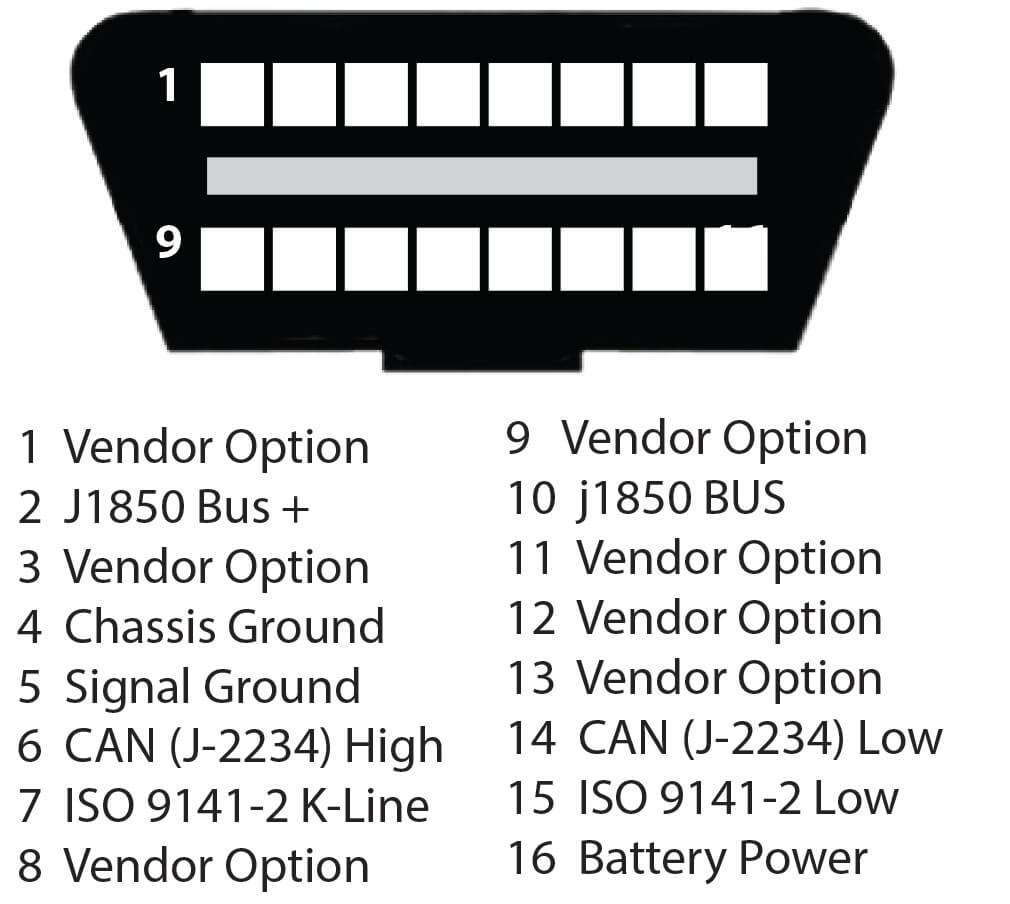
SAE J1850 PWM OBDII Connector Pinout Diagram
This protocol was used mostly on Ford vehicles. It uses pins 1 and 2. The communication signal is differential and it’s bit rate is 41.6kB/sec.
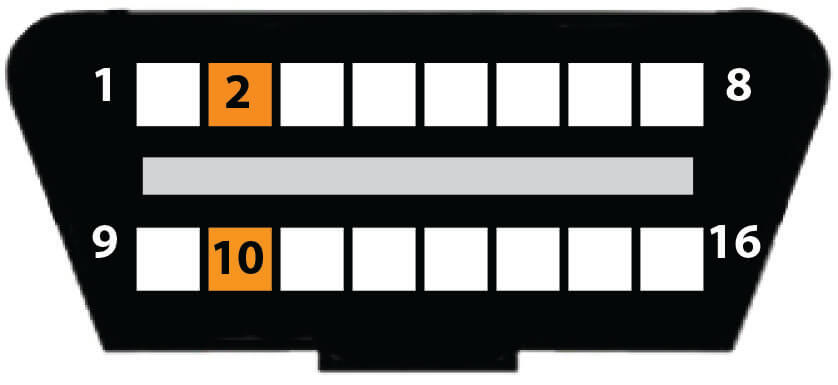
SAE J1850 PWM protocol MUST have pins 2 and 10
J1850 VPW OBDII Connector Diagram
This protocol was used mostly on GM vehicles. It uses pin 1. The communication bit rate is 10.4 kB/sec
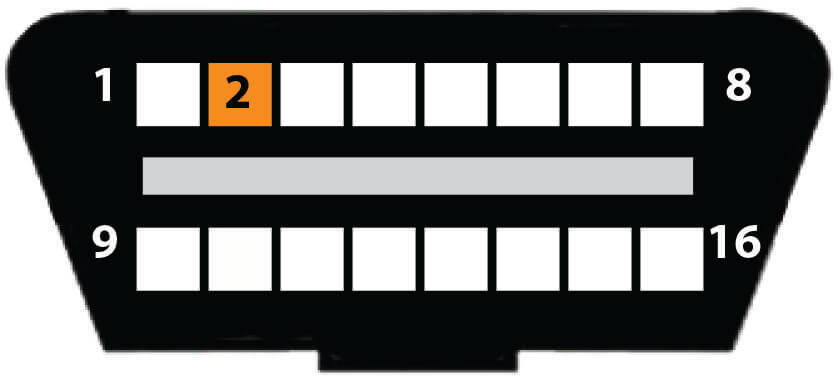
J1850 VPW protocol MUST have pin 2
ISO9141/14230 Connector Diagram
This older protocol was used on European vehicles between 2000 and 2004. It uses uses pin 7 and optionally 15.
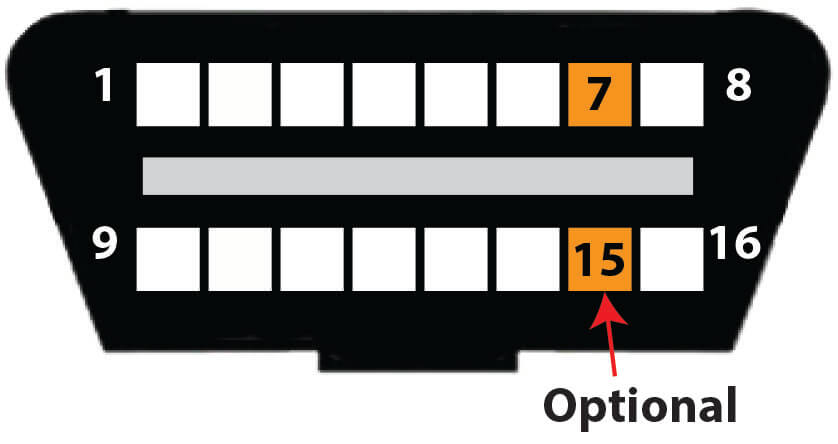
ISO9141/14230 must have pin 7 and may or may not have pin 15. This is an option for the carmaker
ISO15765 (CAN) OBDII Connector Pinout Diagram
ISO15765-4 (CAN-BUS) is mandatory for all 2008 and later vehicles sold in the US. This protocol uses pins 6 and 14. There are four variants of ISO15765 however and they can sometimes be confused as different protocols. They’re not; they’re just variations opf ISO15765-4 and differ only in identifier length and their bus speeds
- ISO 15765-4 CAN (11 bit ID,500 K baud)
- ISO 15765-4 CAN (29 bit ID,500 K baud)
- ISO 15765-4 CAN (11 bit ID,250 K baud)
- ISO 15765-4 CAN (29 bit ID,250 K baud)
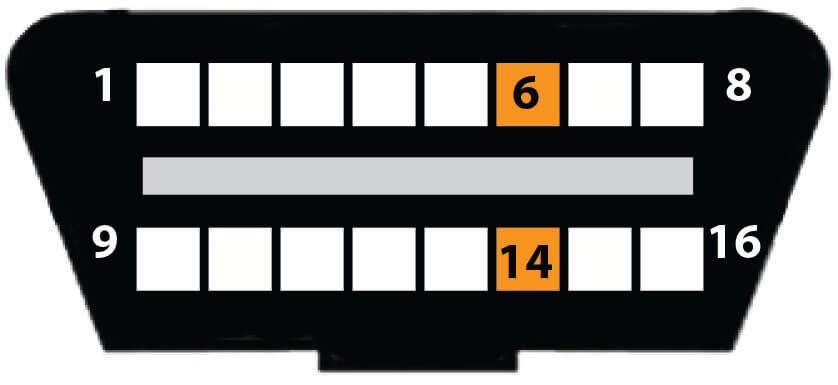
ISO15765 (CAN) must have pins 6 and 14
©, 2022 Rick Muscoplat
Posted on by Rick Muscoplat